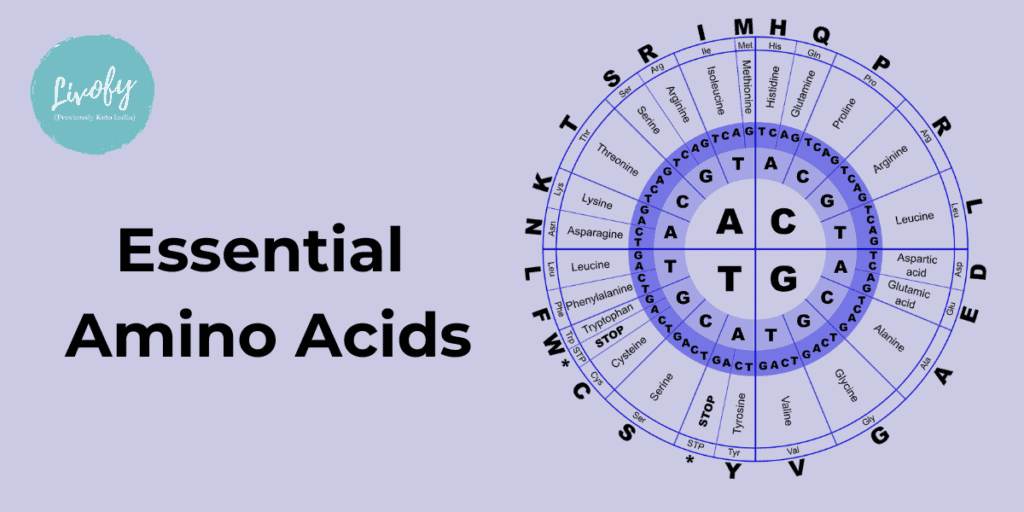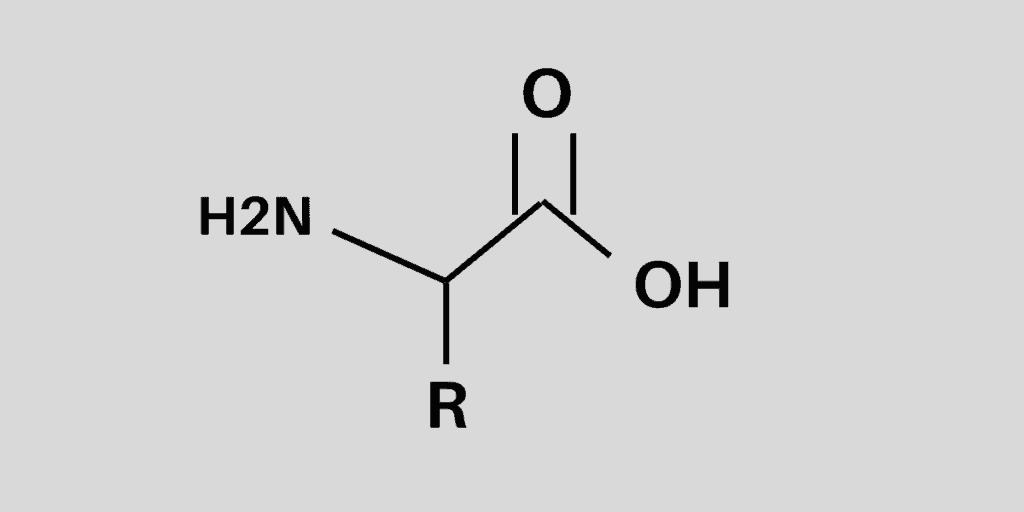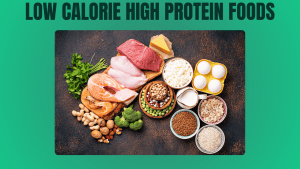Everyone is familiar with the word protein but did you know these are made out of amino acids? These small molecules called amino acids combine and form protein. The same protein is essential for your muscles and body in general. There are two types of amino acids, the essential ones, and the non-essential ones. This blog will help you discover more about essential and non essential amino acids.
What are Amino Acids
Let’s understand it this way, you may have heard of the term called protein. Yes, the same protein your body needs to repair its muscles. These proteins are made up of small molecules which are combined called amino acids. There are a total of 20 amino acids. These include the essential and non essential amino acids.
Now, there are two types or two groups of amino acids. The first group is called the essential amino acids. These are not produced by our bodies and are consumed from foods. The 9 essential amino acids list will be discussed in this blog.
The other group is called the non-essential amino acids and these can be made by our bodies. We will discuss each essential amino acid in this blog.
What Do Amino Acids Do?
Amino acids are vital for the body as they help in the formation of proteins. But you know what is so cool about amino acids, they can combine in various ways to form different proteins and it is the role of these same proteins in the body to:
- Repair and grow body tissue
- Make brain chemicals called neurotransmitters
- Provide energy
- Better skin, nails, and hair health
- Improve immune system
Types of Amino Acid
As mentioned earlier there are in total 20 amino acids and these are divided into two groups, the essential and non essential amino acids. For better reference, here is the essential and non essential amino acids list.
- Alanine
- Arginine
- Asparagine
- Aspartate
- Cysteine
- Glutamate
- Glutamine
- Glycine
- Proline
- Serine
- Tyrosine
- Histidine
- Isoleucine
- Leucine
- Lysine
- Methionine
- Phenylalanine
- Threonine
- Tryptophan
- Valine
The 20 amino acids are divided into two groups, namely the essential and non essential amino acids.
| Non-essential amino acids | Essential amino acids | ||
| Alanine | Histidine | ||
| Arginine | Isoleucine | ||
| Asparagine | Leucine | ||
| Aspartate | Lysine | ||
| Cysteine | Methionine | ||
| Glutamate | Phenylalanine | ||
| Glutamine | Threonine | ||
| Glycine | Tryptophan | ||
| Proline | Valine | ||
| Serine | |||
| Tyrosine |
Molecular Breakdown of Essential Amino Acids
Just like protein is made out of amino acids, these amino acids are also made out of molecules. The amino acid belongs to a carboxylic acid group and has a carbon atom attached to them. The 20 amino acids have a specific side chain which is known as the R group. These are also attached to a carbon atom.
What are Essential Amino Acids?
There are 20 essential and non essential amino acids and out of those are 9 essential amino acids. These are not produced by our bodies but consumed by various food sources. The body needs these amino acids to repair and build muscle. Furthermore, the essential amino acids also help in wound healing, muscle recovery, and performance. The essential amino acids list includes:
- Lysine
- Histidine
- Methionine
- Threonine
- Valine
- Phenylalanine
- Isoleucine
- Leucine
- Tryptophan
Keeping track of all these essential amino acids can be a hassle and this is where a health plan can help you. Buy Health Plans
9 Most Essential Amino Acids List
Amino acids are protein’s building blocks and are crucial for the body. Let’s take a look at the 9 essential amino acids list and explore more about them.
Lysine
The first in the 9 essential amino acids list is Lysine or also known as L-lysine. It is one of the many essential amino acids. This crucial amino acid is required by the body for proper growth and in the production of carnitine.
Carnitine is a nutrient that helps to convert fatty acids in the body into energy. The formation of collagen is also something Lysine helps with. It is essential for good bone health and is important for the skin, tendons, and cartilage.
The deficiency of Lysine in the body can result in:
- Dizziness
- Fatigue
- Agitation
- Anemia
You can get Lysine from protein sources such as:
- Red meat and poultry
- Parmesan cheese
- Eggs
- Cod and Sardines
- Fenugreek seeds
To make sure you get the right amount of Lysine in a day read about How protein needed per day
Histidine
Histadine is another essential amino acid that is taken from foods. Histidine helps the body by repairing damaged tissues and making blood cells. It also protects the nerve cells in the body.
You can get sufficient Histidine in your body from:
- Meat
- Poultry
- Fish
- Grains such as wheat and rye
Methionine
The third in the essential amino acids list is Methionine. It is an essential amino acid as well. Since it is not produced in the body you need to consume it from foods. It helps in the formation of protein in your body. Methionine is an antioxidant and it may be effective in protecting the body from ionizing radiation.
Apart from this, this essential amino acid also helps in detoxifying the body and preventing liver damage. You can get Methionine through:
- Nuts
- Lamb
- Beef
- Soy
- Eggs
Here are some other Protein-rich foods which will give you sufficient amounts of Methionine.
Threonine
This essential amino acid is changed into a chemical called Glycine in the body. It helps to reduce muscle contractions in the body. It is essential in the formation of tissues such as collagen and elastin. Threonine can also help to prevent the buildup of fat in the liver.
Foods that contain this essential amino acid are:
- Meat
- Fish
- Poultry
- Lentils
Do you know what else reduces muscle cramps? Electrolytes! Buy these Buy Fast&up Products for better muscle recovery.
Valine
Valine is part of the 9 essential amino acids. It is a branch-chained essential amino acid. The role of the branch-chained essential amino acids in the body is to produce energy. You can get valine through the following food sources:
- Meat
- Fish
- Soy
- Dairy
Have you tried these Health Recipes filled with protein?
Phenylalanine
Phenylalanine is also a part of the 9 essential amino acids. Hence, the body does not produce it and one has to take it from various food sources. There are two forms of Phenylalanine, the L-form, and the D-form.
The L-form becomes a part of the protein and the D-form help in relieving pain from the body. Apart from this, Phenylalanine has other benefits as well such as:
- Improving memory
- Better skin
- Production of melanin
You can get this essential amino acid from the given food sources:
- Lamb
- Chicken
- Seafood
- Eggs
- Nuts
Isoleucine
This amino acid also comes under the 9 essential amino acids. There are several benefits of this amino acid but further research is needed. Isoleucine helps in the production of hemoglobin. It can also help control and regulate blood sugar levels. It can also help in the recovery process by healing the injured muscles.
To get Isoleucine you can consume the following foods:
- Meat
- Fish
- Nuts
- Soybeans
- Legumes
Leucine
Leucine is also known by the name of a-amino-isocaproic acid. It is part of the BCAA’s, the 3 branches chained essential amino acids. It helps the body with energy during exercise. Leucine can also be effective in healing bones and skin. Promoting muscle mass in the body and increasing production of the Human Growth Hormone (HGH) is also one of its benefits. However, further research is needed to back up these benefits.
You can get Leucine in your diet from:
- Fishes like salmon
- Chickpeas
- Brown rice
- Eggs
- Soybeans
- Beef
- Nuts
Tryptophan
Part of the 9 essential amino acids list, this amino acid helps the body with protein synthesis. The consumption of Tryptophan increases the levels of niacin and serotonin in the body which can contribute to better sleep, less anxiety, and better emotional well-being.
To get Tryptophan you can consume the following foods:
- Peanuts
- Pumpkin
- Milk
- Fish
- Eggs
What Is The Structure of an Amino Acid?
There are various types of both essential and nonessential amino acids, each with a different structure. In general, the design of an amino acid consists of a carbon atom in the center which is attached to hydrogen (-COOH), an amino group (-NH2), and an organic side chain called the R group. Given below is a picture of the structure of an amino acid for better understanding.
Health Benefits of Taking Essential Amino Acids
Amino acids are crucial, without them there would be no formation of protein. Your body needs protein to function optimally. It is best to avoid amino acid supplements and take them from natural food sources. There are a lot of health benefits of taking amino acids such as:
- Weight loss: Intake of amino acids can help aid fat loss in the body and promote lean body mass. BCAA (Branch-chained amino acids) supplements can also show good results. Hence, it is crucial to add the right amino acid foods to your diet.
- Muscle mass preservation: Your body needs the right among of protein to maintain its muscle mass and guess what proteins are made out of? Yes, amino acids. Hence, it is safe to say that essential amino acids are necessary to prevent muscle loss.
- Better Sleep: Want better sleep? make sure to add amino acid foods to your diet. The amino acid called tryptophan can help promote better sleep and treat insomnia as well. This is due to the increased levels of serotonin in the brain which tryptophan helps with.
- Better Skin: Amino acids are crucial for better skin health. They help with wound healing and damaged skin.
What Happens If You Don’t Get Enough Essential Amino Acids?
Amino acids are crucial for the body. They help in building muscles, transport nutrients in the body, and prevent illnesses. Amino acids deficiency leads to a lot of problems, some of which have been discussed below.
- Muscle loss: This is the number one sign when it comes to the lack of amino acids in your body. Protein is made out of amino acids which are essential for the growth and repair of muscles. Less protein intake means fewer amino acids, which can cause muscle breakdown in the body. Hence, it is crucial to add amino acids foods to your diet.
- Digestive issues: Amino acids play an important role in the production of enzymes in the gut. They also help with muscle contractions. This means the lack of amino acids in the body can lead to an unhappy gut.
- Increased anxiety: Essential amino acid such as tryptophan plays a role in the production of certain brain chemicals like serotonin and manages our mood. The lack of tryptophan can lead to less secretion of serotonin in the brain.
The Role of Amino Acids for Human Beings
Without amino acids, you would not have protein and without protein, you would not have muscle development in the body. The importance of amino acids for human beings is not limited to muscle repair and growth, they serve some other purpose as well.
Blood Sugar Regulation
There have been studies that indicate that consuming protein (made out of amino acids obviously) can trigger the insulin levels in the body and make them rise. This can help the body to respond to the glucose levels in the right way. It shows how important essential and non-essential amino acids are to the body.
Better Immune Function
Now you may wonder how amino acids help in bettering our immune system. Here’s how – See our body relies on the white blood cells to fight off infection and the amino acids provide the right energy to attack the disease. Also, white blood cells enable the white blood cells to multiply, which is crucial for fighting off an infection.
Hormone Production
Hormones govern a lot of things in the body. From how stressed you are to how happy you feel. The amino acids help in the release of these hormones in the body. The essential amino acids called lysine and arginine help release the body’s growth hormone.
Natural Source of Essential Amino Acid
So by now, you may have realized how important amino acids are for the body but you may wonder where can you get them from. Check out the list below
- Peas
- Lentils
- Soybeans
- Black beans
- Peanuts
- Garbanzo beans
Non-Natural Source of Essential Amino Acid
These include the amino acids supplements and the BCAA’s.
Difference between Essential & Non-Essential Amino Acids
The difference between essential and non essential amino acids is given below.
| Essential Amino Acids | Non- Essential Amino Acids | ||
| These cannot be produced by our bodies. | They can be produced by our bodies. | ||
| Must be obtained from the diet | Don’t have to obtain it from foods | ||
| Also known by the name of indispensable amino acids | Also known by the name of dispensable amino acids | ||
| These are 9 in total | These are 11 in total | ||
| The function is to build and repair tissue and formation of many neurotransmitters | The function is to provide energy to the body | ||
| Deficiency can lead to a weak immune system | Deficiencies are rare but can cause starvation. | ||
| Examples – histidine, isoleucine, leucine, lysine, methionine | Examples – are cysteine, glutamic acid, glutamine, glycine, proline, serine, and tyrosine. | ||
Recommended Daily Intake of Amino Acids
According to the Cleveland Clinic, the daily recommended intake of 2.2 pounds is :
- Histidine – 14 milligrams
- Isoleucine- 19 milligrams
- Leucine – 42 milligrams
- Lysine – 38 milligrams
- Methionine- 19 milligrams
- phenylalanine – 33 milligrams
- Threonine- 20 milligrams
- Tryptophan – 5 milligrams
- Valine – 24 milligrams
Incorporating Essential Amino Acids Into The Diet
Well, the answer to this question is really simple, add more amino acid foods to your diet. These foods include:
- Eggs
- Meat
- Milk
- Cheese
- Peas
- Beans
- Soybeans and more
Some Tips Before You Include Essential Amino Acid Into Your Diet
Having a diet that contains all the essential amino acids is beneficial for the body but before including them into your diet make sure to take the following things into account.
1. Make sure you are not allergic to any foods: People are allergic to various kinds of foods such as eggs, chicken, and even beans. So before adding them to your diet make sure that you are not allergic to any of them.
2. Do not make your diet full of amino acids: Amino acids for sure are crucial for the body but so are other nutrients as well such as carbs, fiber, and healthy fats. Keep a balanced approach to your diet and add protein, carbs, and fat in the right quantity.
FAQs
How to eat foods with essential amino acids?
Make sure to add more protein-rich foods to your diet that have all the essential amino acids in them. Foods such as eggs, milk, peas, and more.
How Can Your Body Get Enough Essential Amino Acids?
Since our body does not produce the essential amino acids we have to consume them from foods. You can include protein-rich foods in your diet such as eggs, milk, and soybeans.
How many amino acids do I need?
Your body needs 20 amino acids to function optimally. These include both the essential amino acids and the non-essential amino acids.
What is the recommended intake of amino acid?
The daily recommended intake of amino acids per 2.2 pounds is :
- Histidine – 14 milligrams
- Isoleucine- 19 milligrams
- Leucine – 42 milligrams
- Lysine – 38 milligrams
- Methionine- 19 milligrams
- phenylalanine – 33 milligrams
- Threonine- 20 milligrams
- Tryptophan – 5 milligrams
- Valine – 24 milligrams
What is the essential amino acid?
Essential amino acids are the acids that are not produced by our bodies but play a major role in building muscles. The 9 essential amino acids list is as follows:
- Lysine
- Histidine
- Methionine
- Threonine
- Valine
- Phenylalanine
- Isoleucine
- Leucine
- Tryptophan
What is an essential and non-essential amino acid?
Essential amino acids are not produced by the body whereas non-essential amino acids are. There are a total of 9 essential amino acids and 11 non-essential amino acids.










